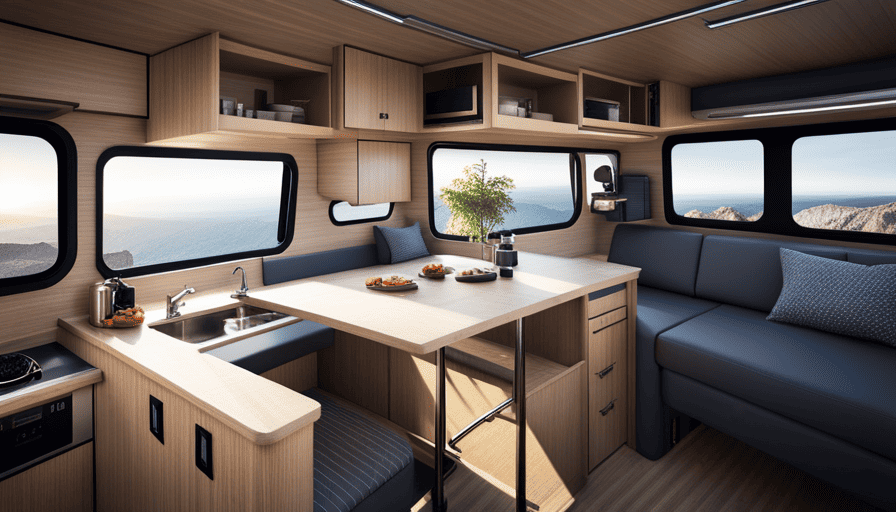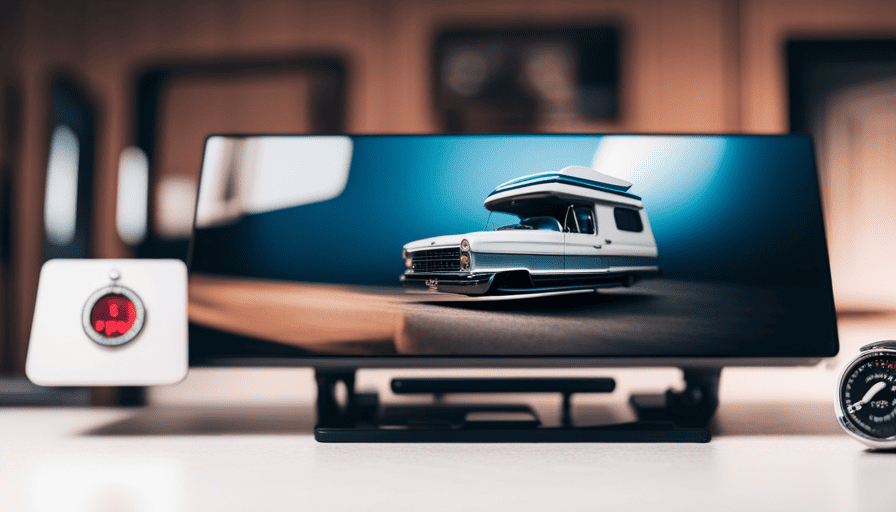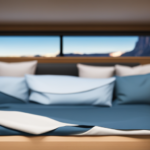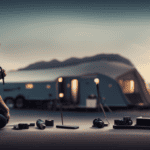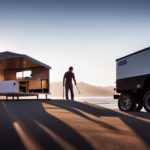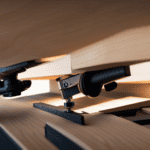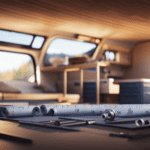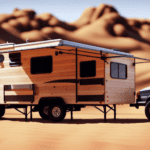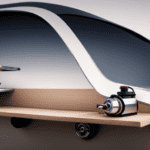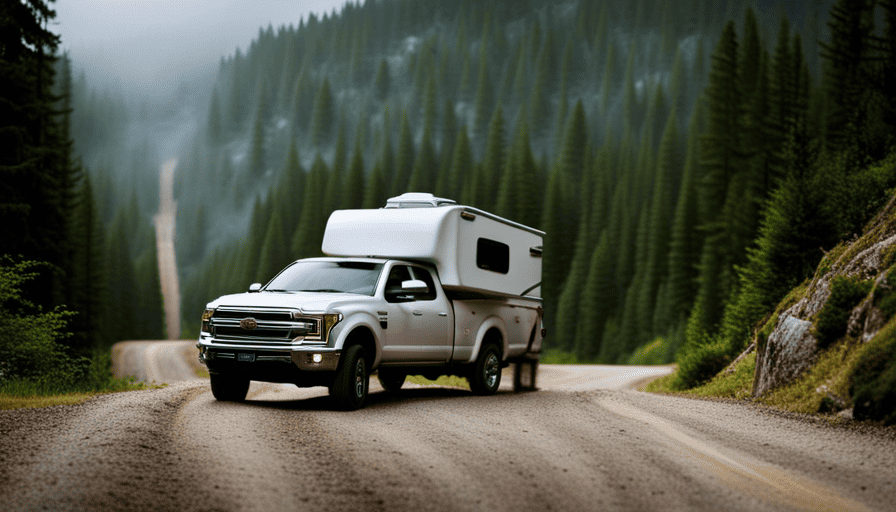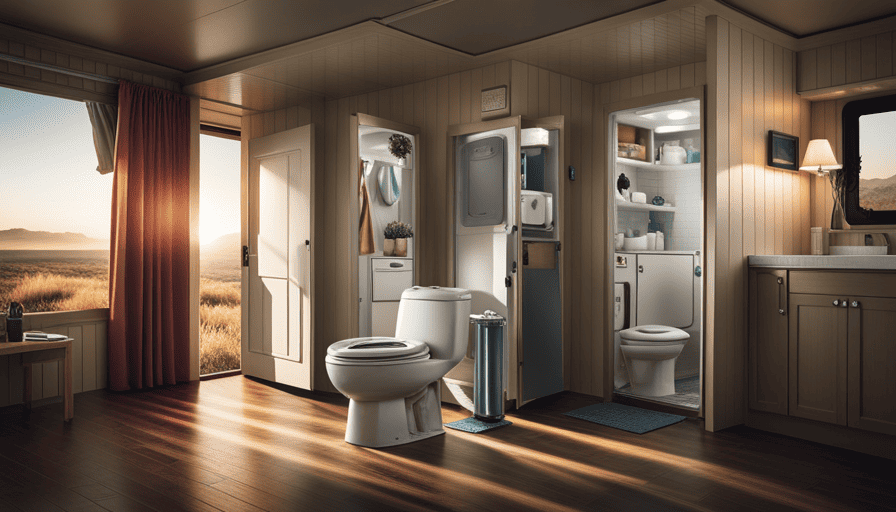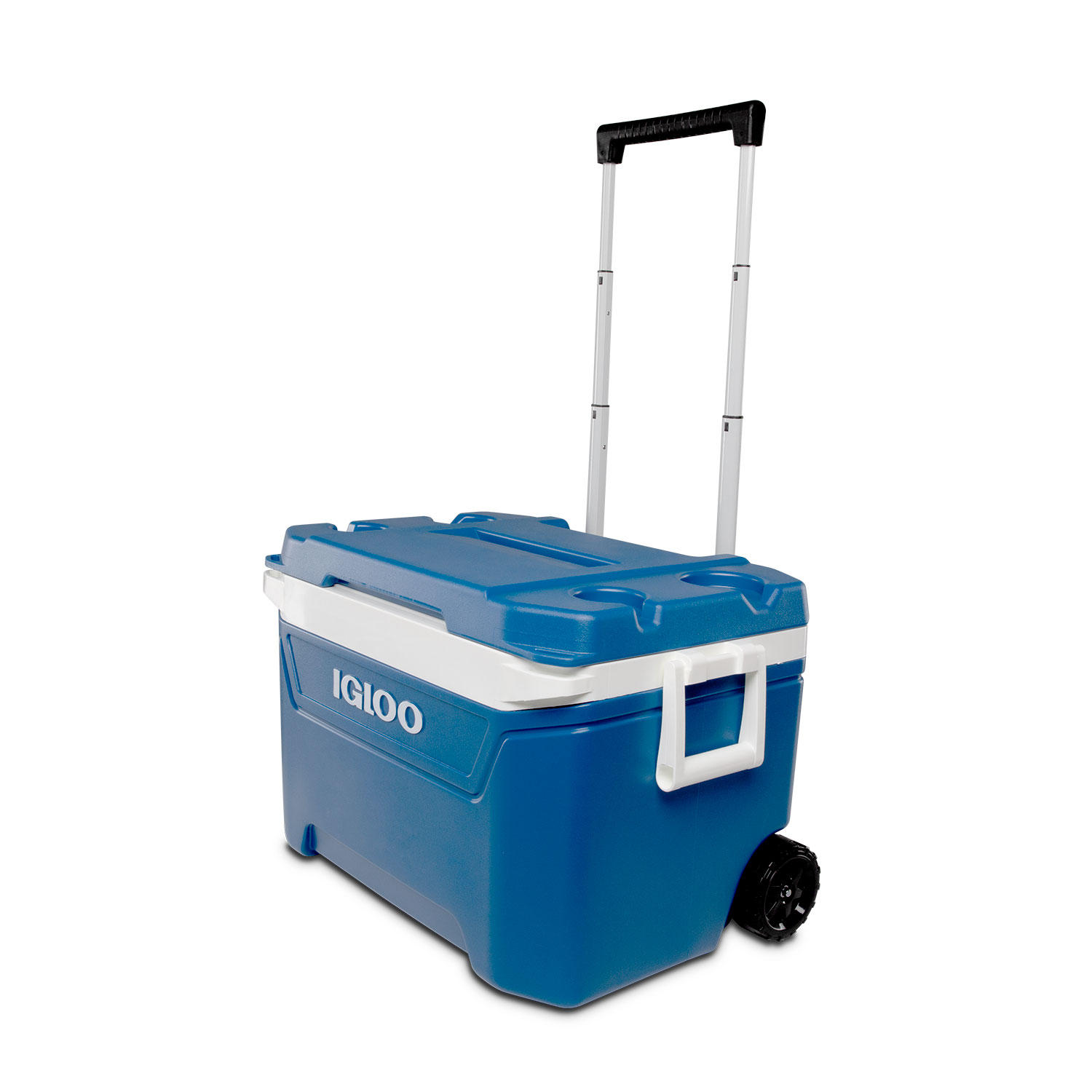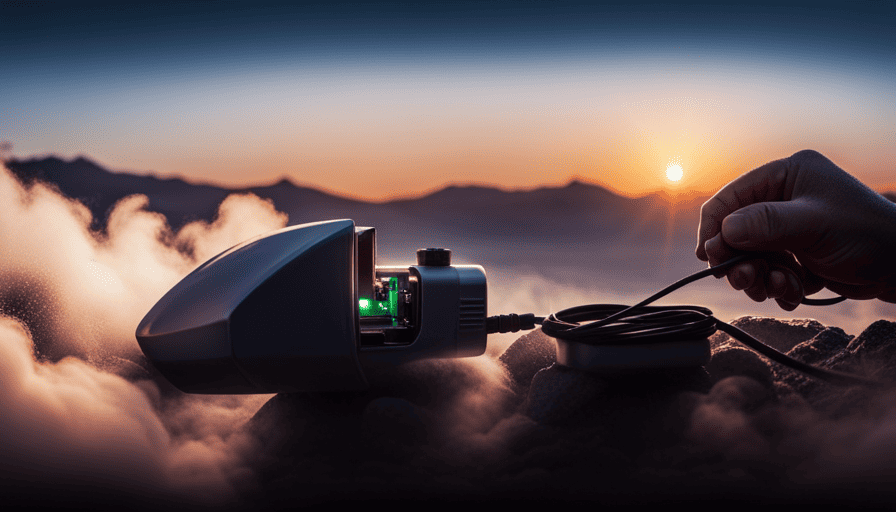Did you know that building a camper van usually costs around $30,000? Although it may seem expensive, the freedom and flexibility that comes with owning your own mobile home definitely make it a worthwhile investment.
In this article, I will guide you through the process of building your own camper van, from choosing the right vehicle to designing the perfect interior layout. We’ll discuss setting a budget, purchasing a used van, and ensuring that you have all the essential amenities and features for a comfortable life on the road.
We’ll also delve into important considerations like insulation and ventilation, plumbing and water systems, and furniture and storage solutions. And of course, we’ll touch on maintenance and upkeep to ensure that your camper van stays in top shape for years to come.
So, if you’re ready to embark on the adventure of a lifetime, let’s get started on building your dream camper van!
Key Takeaways
- The average cost to build a camper van is around $30,000.
- The freedom and flexibility of a mobile home are important factors to consider when building a camper van.
- Important considerations when building a camper van include insulation, ventilation, plumbing, and storage solutions.
- Choosing the right vehicle, setting a budget, and considering DIY vs professional conversions are essential steps in building a camper van.
Choosing the Right Vehicle
When it comes to choosing the right vehicle for your camper van conversion, there are a few key factors to consider. One of the most important aspects is the customizing options available for the vehicle. You want to make sure that the vehicle you choose has the potential to meet your specific needs and preferences.
Look for a van that has a spacious interior layout and can be easily modified to accommodate your desired features, such as a bed, kitchenette, and bathroom facilities. Additionally, consider the overall size of the vehicle. A larger van will provide more space for living and storage, but it may also be more difficult to maneuver and park in tight spaces. On the other hand, a smaller van may be easier to drive but could limit your customization options.
It’s important to find a balance that suits your needs and preferences. Now that you have an idea of what kind of vehicle you’re looking for, let’s move on to setting a budget for your camper van conversion.
Setting a Budget
Creating a budget for your dream mobile home-on-wheels involves carefully considering all the essential expenses. When setting a budget for building a camper van, it’s important to create a timeline to track your progress and ensure you stay on track financially. This will help you stay organized and prioritize your spending.
One way to keep costs down is by finding affordable materials. Research different suppliers and compare prices to find the best deals. Consider purchasing used or discounted items, such as appliances or furniture, to save money. Additionally, think about repurposing items you already have or buying second-hand materials to further reduce costs.
In order to create an accurate budget, make a list of all the necessary components for your camper van conversion. This includes things like insulation, flooring, electrical systems, plumbing, and furniture. Research the average costs of these items and factor them into your budget accordingly.
Remember to also account for unexpected expenses. It’s a good idea to set aside a contingency fund to cover any unforeseen costs that may arise during the conversion process.
By carefully considering all the costs involved and finding affordable materials, you can create a realistic budget for your camper van conversion. This will help you stay on track financially and make your dream of a mobile home-on-wheels a reality.
When it comes to purchasing a used van, there are several considerations to keep in mind. [Transition into the subsequent section about ‘purchasing a used van’.]
Purchasing a Used Van
To successfully transform your dream mobile home-on-wheels, it’s crucial to carefully select and acquire a pre-owned vehicle that meets your specific needs and preferences. When it comes to purchasing a used van for your camper conversion project, there are several buying options to consider.
You can browse online marketplaces, visit local dealerships, or even attend auctions to find the perfect van within your budget. Before finalizing your purchase, it’s essential to conduct a thorough inspection of the van to ensure its condition and suitability for your camper van conversion.
Here’s a handy checklist to guide you:
-
Exterior: Check for any signs of rust, dents, or damage. Inspect the roof, windows, and doors for any leaks or cracks.
-
Mechanical Components: Test the engine, brakes, and suspension system. Check the tires for wear and tear.
-
Interior: Carefully examine the cabin for any signs of water damage, mold, or pests. Inspect the electrical system, including lights, switches, and outlets.
Once you’ve found the right pre-owned van and completed a comprehensive inspection, you can move on to the exciting part of adding essential amenities and features to transform it into your dream camper van.
Essential Amenities and Features
With the addition of essential amenities and features, your dream camper van can become a cozy and functional home on wheels. When it comes to van conversions, the cost can vary depending on whether you choose to do it yourself (DIY) or hire a professional. DIY conversions can be more cost-effective, but they require time, skills, and knowledge of construction and electrical work. On the other hand, professional conversions provide a hassle-free experience, but they can be quite expensive.
To give you an idea of the essential amenities and features you might want to consider, here is a table summarizing some common options:
| Amenities and Features | Cost (DIY) | Cost (Professional) |
|---|---|---|
| Bed | $100 – $500 | $1,000 – $3,000 |
| Kitchenette | $200 – $800 | $1,500 – $5,000 |
| Bathroom | $500 – $1,500 | $3,000 – $8,000 |
These prices are rough estimates and can vary based on the materials and finishes you choose. Remember to also account for additional costs such as insulation, electrical systems, and storage solutions.
Now, let’s move on to the next section about insulation and ventilation, which are crucial for creating a comfortable living space in your camper van.
Insulation and Ventilation
Insulation and ventilation are pivotal aspects in ensuring a refined and comfortable ambiance within your customized mobile dwelling. When it comes to insulation effectiveness, there are several options to choose from.
- Spray foam insulation: This type of insulation provides excellent coverage and helps seal any gaps or cracks, ensuring optimal temperature control inside the van.
- Reflective insulation: Made from lightweight materials, this type of insulation reflects heat away from the van, keeping it cool in hot climates.
- Fiberglass insulation: It’s a popular choice for its affordability and effectiveness in trapping heat during colder months.
In addition to insulation, proper ventilation is essential to create a fresh and healthy environment. Here are some ventilation options to consider:
- Roof vents: These allow hot air to escape and fresh air to circulate, preventing stuffiness and condensation buildup.
- Side windows: Installing windows that can be opened provides cross ventilation and allows for a breeze on warm days.
By combining effective insulation with proper ventilation, you can create a comfortable living space no matter the weather conditions.
Now, let’s move on to the next section about the electrical system and solar power, which plays a crucial role in powering your camper van.
Electrical System and Solar Power
Make your camper van shine like a supernova with an electrical system and solar power that will electrify your adventures. When it comes to building a camper van, having a reliable electrical system is essential. Not only does it power your lights and appliances, but it also keeps your devices charged and allows you to stay connected while on the road. To ensure a smooth and efficient power supply, it’s important to consider the battery capacity, wiring, and electrical components.
One way to power your electrical system is through solar energy. Installing solar panels on the roof of your camper van allows you to harness the power of the sun and convert it into electricity. This renewable energy source is not only eco-friendly but also a cost-effective solution in the long run. With the right combination of solar panels and batteries, you can have a self-sustaining power source that keeps you going even when you’re off the grid.
When designing your camper van’s electrical system, it’s crucial to plan the wiring layout carefully. This ensures that all components are properly connected and that there are no unnecessary knots or tangles. It’s also important to choose high-quality electrical components that are suitable for the demands of a camper van lifestyle. This includes items such as circuit breakers, fuses, and switches.
Incorporating a table to showcase the different battery capacities and their corresponding power outputs can help you make an informed decision about which option suits your needs best:
| Battery Capacity | Power Output |
|---|---|
| 100Ah | 1200W |
| 200Ah | 2400W |
| 300Ah | 3600W |
| 400Ah | 4800W |
| 500Ah | 6000W |
With the right battery capacity and a well-designed electrical system, you can enjoy all the comforts of home on your camper van adventures. Now, let’s dive into the next section and explore the world of plumbing and water systems.
Plumbing and Water System
To ensure a comfortable and refreshing experience during your adventures, you’ll want to consider the plumbing and water system in your camper van.
Having access to clean water and a reliable plumbing system is essential for your day-to-day needs.
When it comes to water heater options, there are a few choices to consider. Tankless water heaters are popular for camper vans as they’re compact and provide hot water on demand. They’re energy-efficient and can be powered by either propane or electricity.
Another option is a traditional tank water heater, which requires a larger space but can provide a larger supply of hot water.
In terms of water filtration systems, it’s important to have clean drinking water on the road. There are various options available, including under-the-sink filters or portable water filters. These systems remove impurities and ensure that the water you consume is safe.
As we transition into the next section about interior layout and design, it’s important to consider how the plumbing and water system will integrate seamlessly into your overall camper van setup.
Interior Layout and Design
Creating a cozy and inviting space is crucial when it comes to designing the interior layout of your camper van, allowing you to fully embrace the saying ‘home is where the heart is.’ Space optimization is key in a camper van, as every square inch counts. To make the most of the available space, it’s important to carefully plan the layout and consider multifunctional elements.
One way to optimize space is by incorporating a 3 column and 5 row table in your camper van. This table can serve as a dining area, workspace, and storage solution all at once. By having a table that can be folded or collapsed when not in use, you can maximize the floor space and create a versatile environment.
In addition to space optimization, the color scheme and aesthetics play a significant role in creating a pleasant atmosphere. Choose colors that are light and neutral to make the space appear larger and brighter. Adding pops of color through accessories or accent pieces can bring personality and vibrancy to the interior.
As we move on to the next section about furniture and storage solutions, it’s important to consider the layout and design elements we have discussed in order to create a cohesive and functional space.
Furniture and Storage Solutions
Transform your cozy camper into a functional and stylish haven with clever furniture and storage solutions that effortlessly blend practicality and aesthetics. Here are five key furniture and storage solutions that will help you maximize space and customize your camper van:
-
Opt for modular furniture pieces that can be easily rearranged and transformed to suit your needs. This allows you to make the most of the limited space available while providing flexibility in creating different layouts.
-
Invest in foldable tables and chairs that can be easily stowed away when not in use. This not only saves space but also provides additional seating options when needed.
-
Utilize the space under your bed by incorporating storage compartments or drawers. This area can be used to store clothes, bedding, or any other items that you want to keep out of sight but easily accessible.
-
Install wall-mounted shelves to take advantage of vertical space. These shelves can be used to store books, kitchen essentials, or decorative items, keeping your camper van organized and clutter-free.
-
Consider incorporating hidden storage compartments within your furniture pieces. These compartments can be used to store valuables or items you want to keep secure, while also maintaining a sleek and clean aesthetic.
By incorporating these furniture and storage solutions into your camper van, you can create a practical and personalized space that maximizes every inch.
In the next section, we’ll delve into the important topic of maintenance and upkeep to ensure your camper van stays in top condition for years to come.
Maintenance and Upkeep
Maintaining and caring for your camper van is essential to ensure its longevity and preserve its functionality, allowing you to continue enjoying your adventurous travels without any worries. However, it’s important to be aware of the potential costs of repairs and finding reliable mechanics.
When it comes to the cost of repairs, it can vary depending on the specific issue and the type of camper van you have. Common repairs may include fixing mechanical problems, addressing electrical issues, or replacing worn-out parts. The cost can range from a few hundred dollars to several thousand, depending on the complexity of the repair and the parts needed. It’s always a good idea to budget for potential repairs and set aside some funds specifically for this purpose.
Finding reliable mechanics for your camper van can be a challenge, especially if you’re traveling in unfamiliar areas. It’s important to do your research and find reputable mechanics who specialize in working on camper vans. Online forums, social media groups, and local recommendations can be great resources to find experienced mechanics who have the expertise to diagnose and fix any issues your camper van may have.
While the cost of repairs can vary, it’s important to budget for potential maintenance and repairs to keep your camper van in good shape. Finding reliable mechanics is crucial to ensure that any problems are addressed properly, allowing you to continue your adventurous travels worry-free.
Frequently Asked Questions
What type of insurance is needed for a camper van?
When it comes to camper van insurance, there are a few coverage options to consider.
First, liability insurance is essential to protect against damages or injuries caused by your camper van.
Additionally, comprehensive and collision coverage can provide financial protection in case of accidents, theft, or damage to your vehicle.
Other options to consider include personal injury protection, uninsured motorist coverage, and roadside assistance.
It’s important to choose a policy that aligns with your specific needs and budget.
Can I finance the cost of building a camper van?
Financing options for building a camper van are available, allowing you to spread the cost over time. Many lenders offer loans specifically tailored for this purpose, with competitive interest rates.
By exploring these options, you can make your dream of a camper van a reality without breaking the bank. It’s important to research different lenders, compare loan rates, and consider your budget before making a decision.
With the right financing, you can embark on your camper van journey with peace of mind.
Are there any legal requirements or permits needed to convert a van into a camper?
Yes, there are legal requirements and permits needed to convert a van into a camper.
These regulations vary depending on your location, but generally, you may need to comply with certain safety standards and obtain permits for modifications such as installing windows, adding electrical systems, or altering the vehicle’s structure.
It’s important to research and understand the legal restrictions and safety regulations in your area before starting a camper van conversion project.
How much does it cost to register a camper van?
Registering a camper van is a breeze! The cost comparison between states is like night and day. Some states charge a whopping fortune, while others are a steal.
The registration process typically involves submitting the necessary paperwork, paying a fee, and obtaining license plates. It’s important to research the specific requirements of your state to avoid any surprises.
Now, let’s dive into the details of building a camper van and its associated costs.
What are some common challenges or pitfalls to avoid when building a camper van?
When building a camper van, there are several common mistakes that people often make. One of the biggest pitfalls to avoid is using subpar materials. It’s essential to invest in high-quality materials that are durable and can withstand the wear and tear of traveling.
Additionally, not properly planning the layout and storage can lead to inefficiency and wasted space. Taking the time to carefully plan and research can help you avoid these challenges and create a well-built camper van.
What is the Average Cost of Painting a Camper Van?
The average cost of painting a camper shell can vary depending on several factors. These factors include the size of the shell, the desired paint type and finish, any necessary repairs or preparation work, and the labor costs charged by the painter. Generally, the cost can range from a few hundred dollars to several thousand dollars. It is advisable to obtain quotes from different painters, considering their expertise and track record, to ensure a fair price.
What is the cost difference between converting a bus into a camper versus building a camper van from scratch?
Converting a bus into a camper can be more cost-effective than building a camper van from scratch. The base cost of a bus is often lower than that of a van, and the larger space of a bus allows for more flexibility in design and renovation. Overall, “turn a bus into camper” can save money.
Conclusion
In conclusion, building a camper van can be an exciting and fulfilling project. It requires careful planning, research, and a solid budget. By choosing the right vehicle and purchasing a used van, you can create a comfortable and functional living space on wheels. Additionally, considering essential amenities and features is important.
Remember the adage, "The journey is the destination," as building a camper van is not just about the end result, but also about the process and the adventures that await. With proper maintenance and upkeep, your camper van can provide years of memorable travel experiences.

